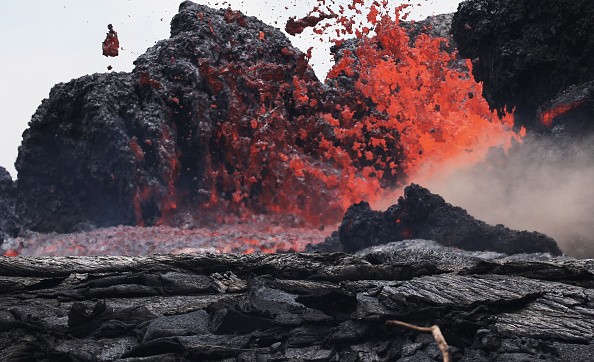The USGS keeps four U.S. Two volcanoes are on "WATCH" status, while two others are on "ADVISORY" alert.
The USGS continues to monitor volcanoes around the country; four have been upgraded to the WATCH / ORANGE category owing to recent activity. The Great Sitkin volcano, Pavlof, Semisopochnoi, and Kilauea are the four volcanoes displaying symptoms of unrest or activity.
Mauna Loa and Cleveland are the two volcanoes that have been designated as ADVISORY / YELLOW. All other volcanoes monitored by the USGS currently are GREEN or unrated.
The USGS monitors 161 potentially active volcanoes in the United States. However, Alaska has many volcanoes; there have been more than 130 active volcanoes and volcanic fields in the last 2 million years. Since the mid-1700s, 50 have been active, and AVO investigates them.
Read also: White Island Disaster: Story Behind the Horrifying Volcanic Eruption That Killed 20 Tourists
Hawaiian Volcanoes

Hawaii is another area known for its volcanoes; on the Big Island of Hawaii, Kilauea, Mauna Loa, and Hualalai are all considered active and potential dangers, but only Kilauea is now erupting. The United States is home to only a small percentage of the world's volcanoes: the USGS estimates that there are around two dozen active volcanoes worldwide at any moment.
According to the USGS, over 1,500 potentially active volcanoes worldwide, with approximately 500 erupting in recent history.
The Hawaii Volcano Observatory (HVO) monitors Hawaii volcanoes, while the Alaska Volcano Observatory (AVO) monitors Alaska volcanoes. Other observatories include the California Volcano Observatory, Cascades Volcano Observatory, Yellowstone Volcano Observatory, and Northern Mariana Islands Volcano Observatory.
Each of the USGS's additional volcanic observatories keeps track of volcanoes in their particular areas. None of the other observatories are registering unusual activity or anything more than background noise.
Aviation codes and Volcanic Activity Alert Levels
Aviation Codes and Volcanic Activity Alert Levels are issued by the USGS and volcanic observatory units in the United States. The many types of aviation codes are green, yellow, orange, and red. When ground-based monitoring fails to show that a volcano operates at an average background activity level, it is labeled "unassigned.
Yellow indicates that a volcano displays symptoms of high unrest above known background levels, whereas green indicates usual activity associated with a non-eruptive condition. The color of a volcano changes from red to orange when there is increasing instability and the risk of eruption.
Finally, the code becomes red when an eruption is imminent with large volcanic ash emissions predicted in the atmosphere or when an eruption is ongoing with considerable volcanic ash emissions.
The alert levels for volcanic activity include normal, advisory, watch, or warning. When data is lacking, the volcano is designated as "unassigned," as with aviation codes. It is deemed normal when the volcano is at regular background activity in a non-eruptive condition.
An advisory is issued if the volcano shows heightened disturbance above the background level. A watch is issued when a volcano shows signs of increased or growing disturbance, whereas a warning is issued when a dangerous eruption is imminent.
Related Article : Long Quiet Volcano Showed Activity As Alaska Cruise Season Begins
For similar news, don't forget to follow Nature World News!
© 2025 NatureWorldNews.com All rights reserved. Do not reproduce without permission.





